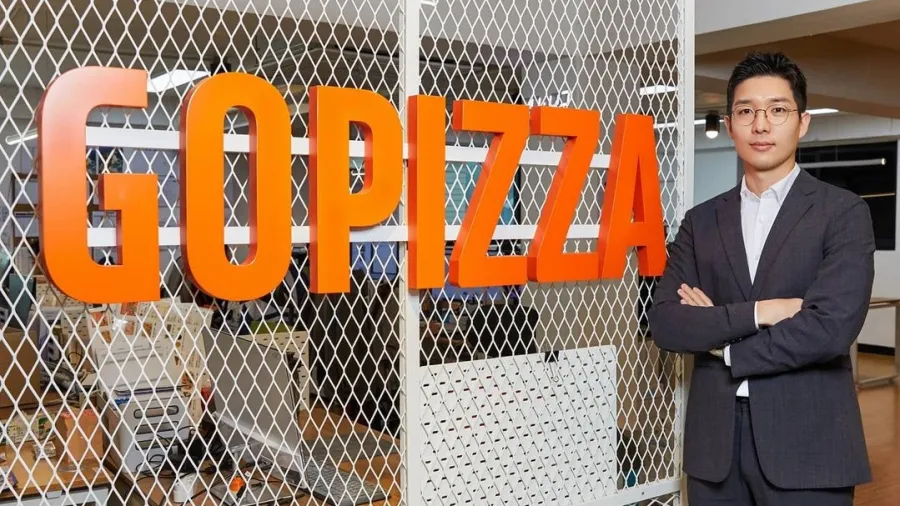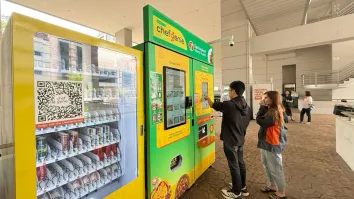
GOPIZZA’s Jay Lim on cost-cutting strategies to offset labour costs and food price inflation
Strategies include vertical integration, leveraging global brand status, and relying on tech.
Intending to be the next McDonald’s GOPIZZA CEO Jay Lim has grown his brand to 200 outlets, relying on GOPIZZA’s small format and technology to offer consumers quality pizza at an affordable price.
Jay joins this year’s roster of speakers at the QSR Media Asia Tabsquare Conference & Awards 2024 happening this 23 April at the Furama RiverFront in Singapore. He will lead a speaking session and share GOPIZZA’s global journey and growth. He will talk about best practices in digitally transforming the business by leveraging AI and technology.
ALSO READ: Why generating ‘talkability’ is part of Pizza Hut Taiwan’s brand strategy
QSR Media spoke to Jay ahead of his session to find out more about his thoughts on the latest industry trends.
QSR Media: What are some of the interesting trends you've noticed in the past year that QSR leaders should keep an eye out for?
Jay: The escalating labor and ingredient costs have spurred a significant trend in the adoption of food technologies aimed at boosting kitchen productivity, particularly in developed nations like Singapore. However, achieving a genuine digital transformation within a kitchen remains a challenge. We find ourselves in a collective learning phase, with some pragmatic innovators starting to emerge.
Another noteworthy trend is the convergence of retail and restaurant establishments. These industries are joining forces to craft memorable experiences for customers. It's no longer solely about functional shopping or dining; it's about curating store experiences that leave customers eager to return. A prime strategy lies in the synergy between retail and restaurant businesses, exemplified by our GOPIZZA shop-in-shop concept in cinemas, CVS, and gas stations – shining examples of this approach.
What has been your top challenge for the year and how did you and your brand overcome it?
Clearly, the foremost challenges confronting the majority of industry participants revolved around the substantial increases in labor and ingredient costs. In our case, our strategic approach involving vertical integration for critical components, such as our parbaked dough and essential equipment like the GOVEN and AI Smart Topping Table, allowed us to implement cost-cutting measures at the manufacturing level, effectively managing our Cost of Goods Sold (COGS).
In addition to this, our global brand status afforded us a significant advantage in negotiating with vendors on a global scale, providing us with enhanced bargaining power and more favorable terms.
Lastly, our operational efficiency, characterized by small store footprints and optimized labor utilization, played a pivotal role in mitigating the impact of rising costs. This efficiency not only helped minimize potential setbacks but also facilitated our unprecedented expansion into the aforementioned retail spaces at an accelerated pace.
How do you think QSRs could maintain their competitive advantage in a quickly changing landscape?
In today's landscape, where many customers are seeking new experiences, the Quick Service Restaurant (QSR) industry, especially in developed nations, faces certain challenges. To explore new opportunities, both globally and in developing nations, and to continue delivering fast, affordable, and consistent meals, it's essential to reevaluate traditional large restaurant spaces that may hinder scalability and sustainability.
By innovating our operations to enhance worker productivity and establish scalability as a foundational principle, we can break free from the limitations of traditional QSR models. Instead of solely focusing on creating the best, newest, or most exotic dining experiences for customers, we should consider venturing into new spaces. This approach allows us to partner with establishments that excel in providing unique experiences, offering our food options as an integral part of the overall customer journey. This vision underscores our commitment to becoming 'The Pizza Everywhere Company.'
What specific insights do you want to leave the audience in your speaking/panel session?
I'd like to discuss the significance of global brand expansion to unlock limitless growth possibilities and the pivotal role played by a diverse range of food technologies in ensuring global scalability. This journey extends beyond robotics and AI, recognizing that the kitchen is a nuanced craft where cutting-edge technology is not always the ultimate solution. Our goal is to emphasize what defines practical and realistic food technology, harmonizing its effectiveness both at the kitchen level and on a global scale, leaving a lasting imprint in the culinary world.




























